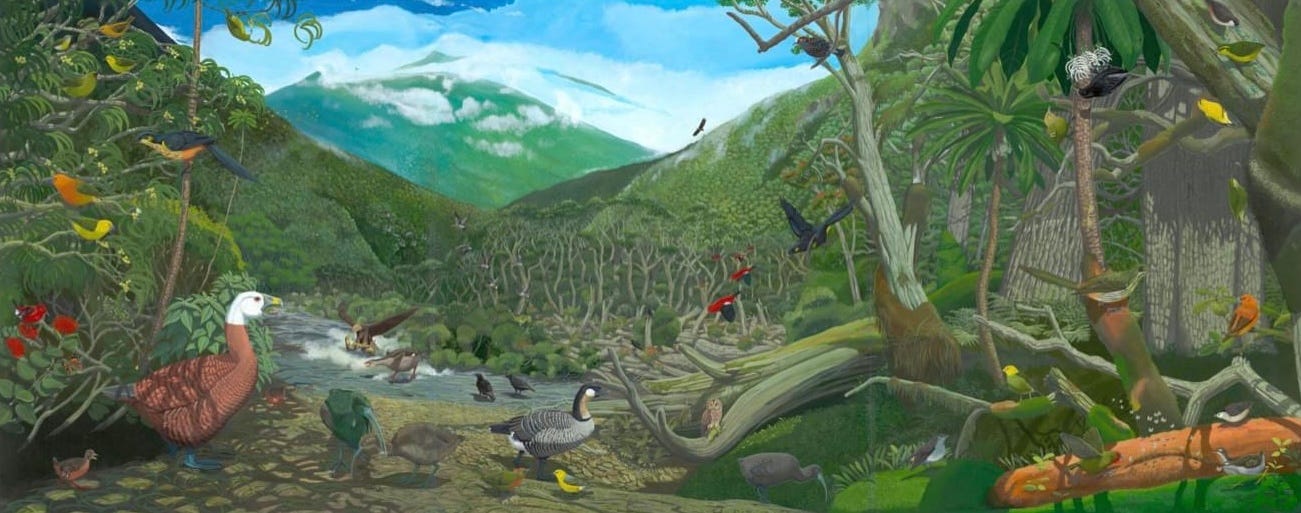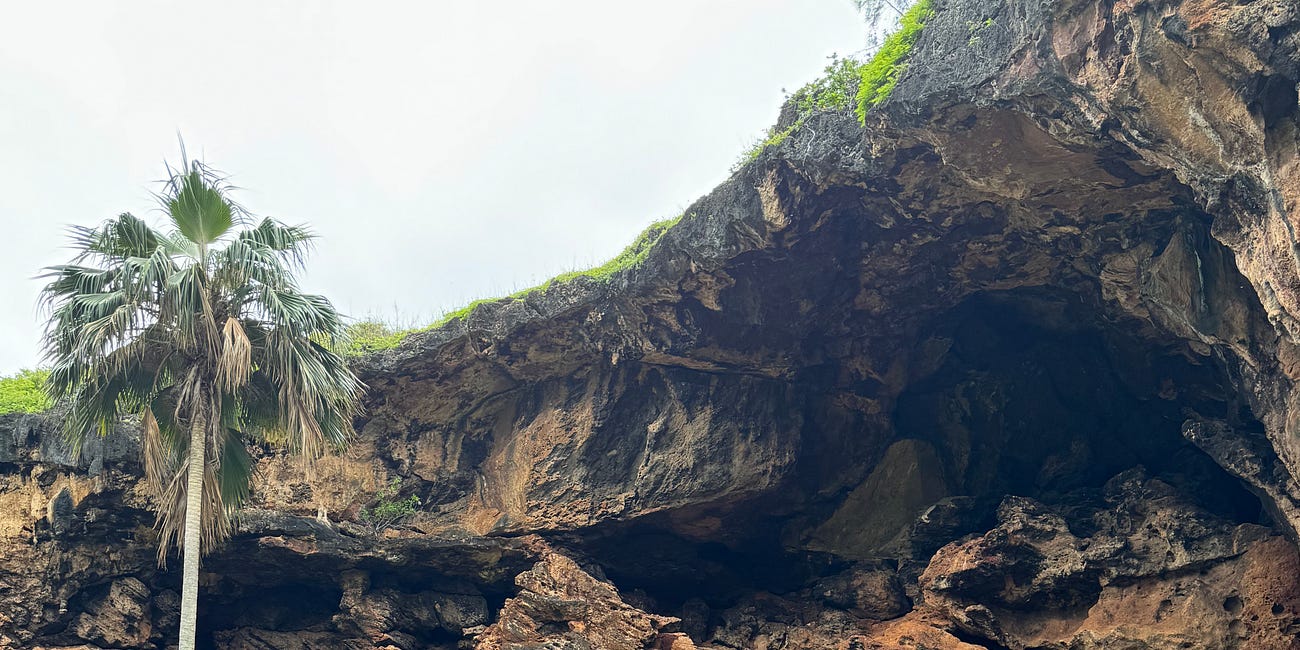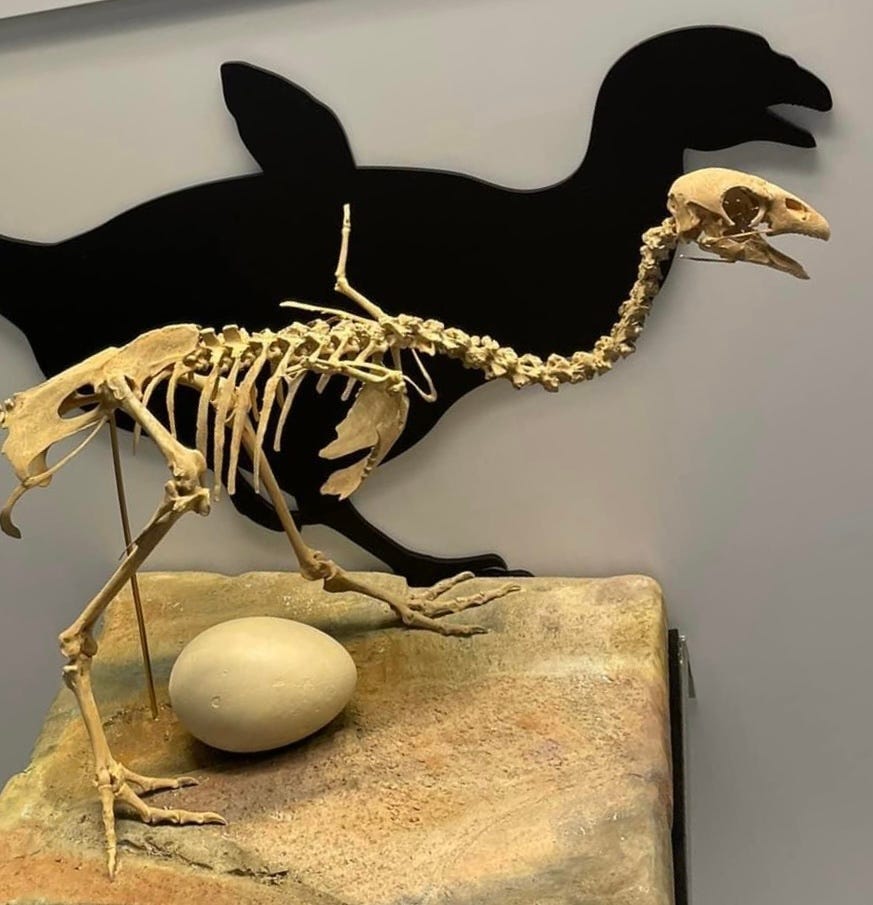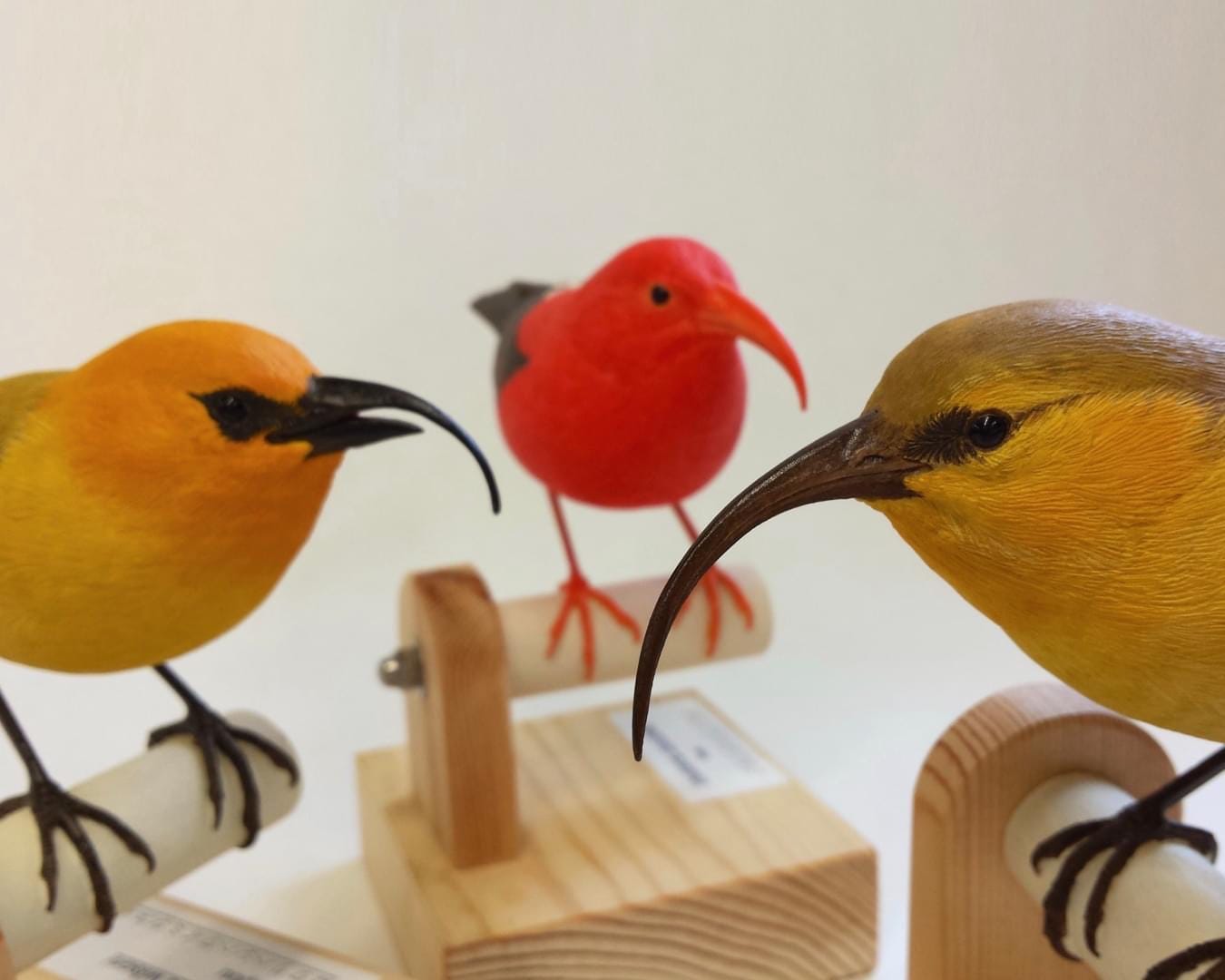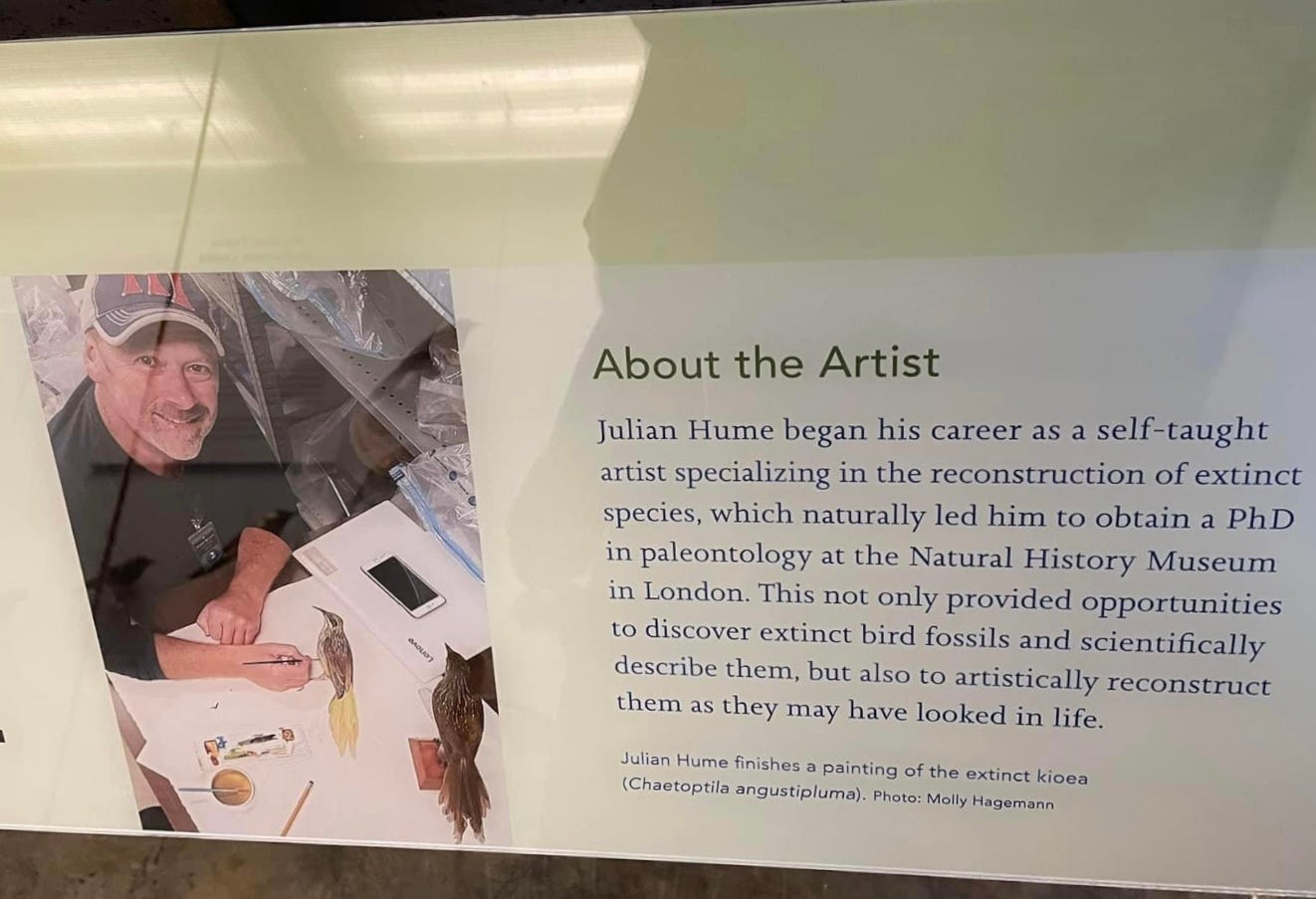The Incredible Birds of Hawaii: Meet the Moanalo
Lele o Nā Manu: The Splendor and Loss of Hawaiʻi’s Birds, a New Exhibit at the Bishop Museum in Honolulu
2024 has been named the Year of the Forest Birds of Hawaii, Ka Makahiki o Nā Manu Nahele. These birds are the jewels of the forests of Hawaii. On Friday a new exhibit opened at the Bishop Museum: Lele o Nā. Manu: The Splendor and Loss of Hawai’i’s Birds.
Since we won’t be back in Hawaii until next year, I wanted to experience and share the beauty and history of these magical birds and highlight some of the extraordinary facts about them, with a particular focus on those that are extinct.
Above: Mural for the Bishop Museum Lele o Nā Manu Exhibit by Julian Hume.
I first became aware of Julian Hume’s artistry and special talents in Kauai this year when visiting the
Makauwahi Cave Reserve
Yesterday I described the walk from Keoneloa Beach (commonly known as Shipwreck Beach) to the Makauwahi Cave Complex, and the Makauwahi Cave Trail that follows the edges of the cave complex. So now it’s time to get down on our knees and crawl in! Once through you will be rewarded with the view above, so don’t be intimidated by the small opening. A fabr…
The Makauwahi Cave Complex yielded a rich variety of fossils. It was from fossil deposits like these that the now extinct birds have been reconstructed
The native forest birds of Hawaii are unique to the Hawaiian Islands. They have evolved to fulfill roles of pollinators, insect eaters, and seed dispersers. Of the 84 species that have been identified from observation or from the fossil records, 58 have become extinct, and 24 of the remaining 26 are vulnerable or endangered.
Above: close up of Moanalo in the Julian Hume mural.
The Moanalo is one of those now extinct. The name “Moanalo” is from Hawaiian moa (fowl) and nalo (forgotten). It was first thought to have evolved from the goose, but careful research and DNA analysis has proven that their true ancestors were ducks.
Just imagine the ancestors of the Moanalo, swimming or flying across the Pacific, landing in the Hawaiian Islands, then evolving and losing their ability to fly, like the flightless cormorants of the Galapagos. But unlike those cormorants, later human immigrants to the Hawaiian Islands no doubt found these ducks quite tasty and easy prey, and feral pigs probably ate their eggs as well.
The eggs were extremely large for the body size, according to Julian Hume, telling us that the young were precocial, meaning that the chicks could run around and feed themselves as soon as they hatched.
Above: some of the birds carved by Master Sculptor Haruo Uchiyama.
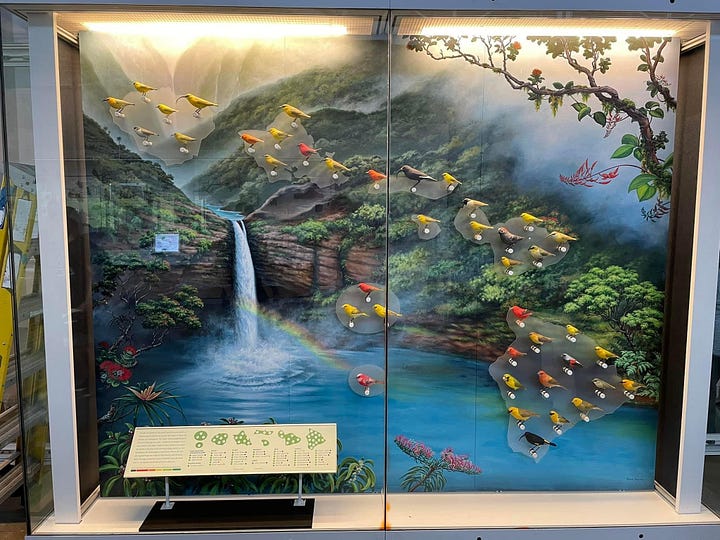
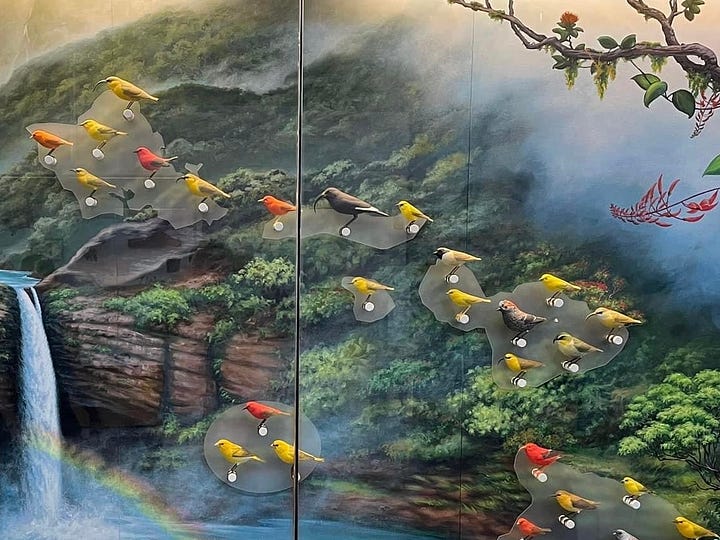

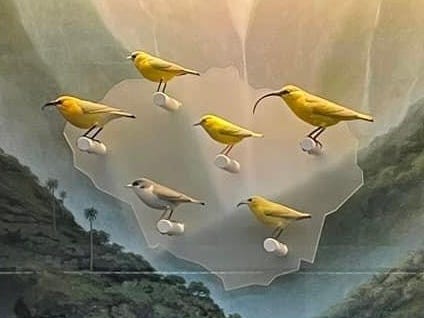
Above: more of the birds carved by Master Sculptor Haruo Uchiyama, with a fantastic mural by Patrick Ching as background.
Watch this excellent Facebook Video of the Bishop Museum Exhibit to see more of these beautiful birds, which are presented in front of the Patrick Ching mural. Facebook Video of the Bishop Museum Exhibit.
Had Charles Darwin visited Hawaii, would he have grasped the principles of evolution which led to this avian diversity? Or would the richness have been just too overwhelming? The Beak of the Finch, by Jonathan Weiner (highly recommended) suggests to me that the richness of diversity on these islands would have been too much for Darwin to connect the dots.
But knowing what we now know, it is easier to see how these unique birds did evolve over the millennia to provide such a rich and varied population to the beautiful islands of Hawaii, each finding a unique niche in which to thrive.
Mahalo for reading, sharing and subscribing!
And a huge and special thanks to Julian Hume for permission to use his photos. You can follow Julian on Facebook, where he shares his adventures around the world, most recently on Mauritius.





